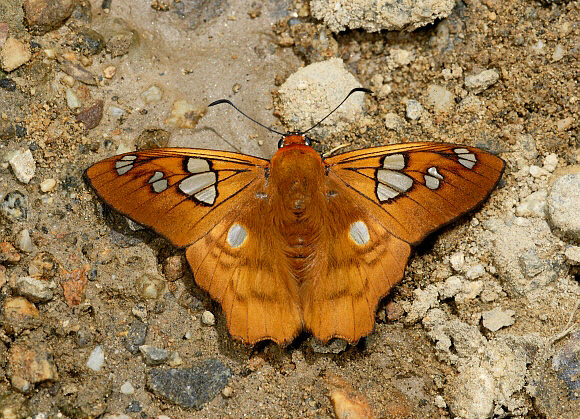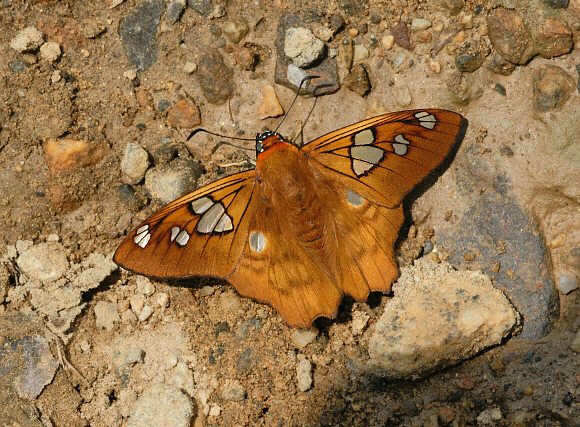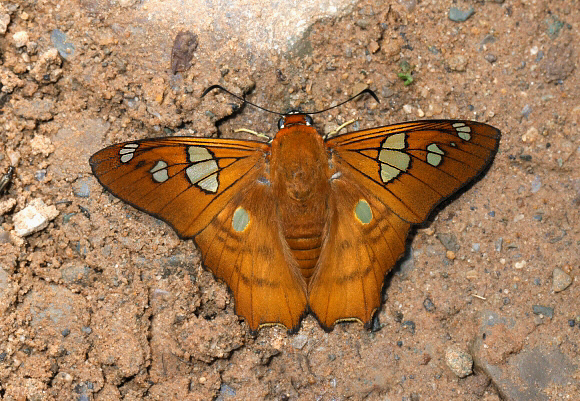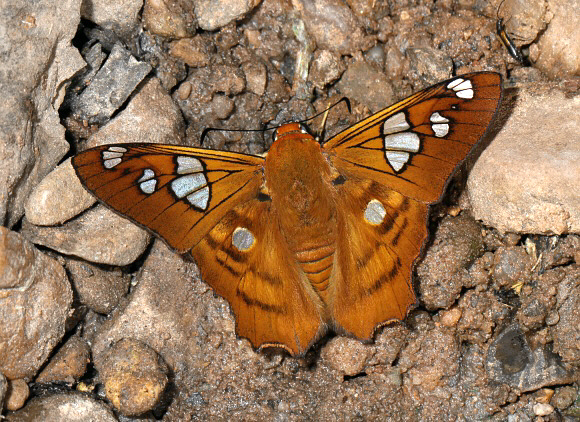
Introduction
The subfamily Pyrrhopyginae comprises 163 stout-bodied and powerfully flying species, all of which are confined to the neotropical region. They are divided into 4 tribes – the Zoniini, Pyrrhopygini, Oxynetrini and Passovini. The last named includes 26 spectacular species in the genera Aspitha, Azonax, Granila, Myscelus and Passova.
The genus Myscelus comprises of 11 beautiful species, each sharing the same wing shape and basic pattern as phoronis. The shape and configuration of the hyaline windows on the forewings varies according to species. The circular hyaline window found on the hindwing of phoronis is absent in certain species including epimachia and santhilarius.
Myscelus phoronis occurs from Colombia to Peru.

Habitats
This species appears to be confined to primary rainforest and transitional cloudforest habitats at elevations between about 400-1800 metres in the eastern Andes.

Lifecycle
To be completed.

Adult behaviour
This stunning butterfly is usually encountered when solitary males are seen basking on low foliage, nectaring at Eupatorium, or imbibing moisture at roadsides or along rocky riverbanks.
When basking and feeding the wings are normally held outspread, but in hot sunny conditions males sometimes walk about slowly on the ground with the wings erect over the back.

